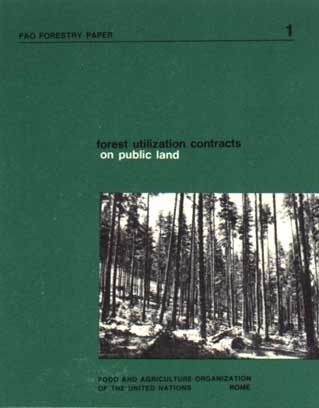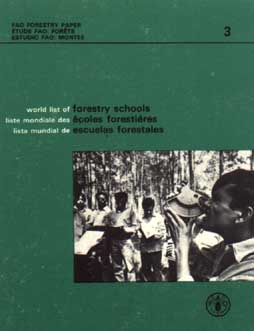Vicuña success story
Mongolian forests
Identity card for chemicals
Curricula trends in US forestry schools
International arboricultural conference
Vegetation map of Europe
VICUNA GRAZING WITH CATTLE IN PERU too successful
In 1965 the largest number of vicuñas in South America was in the Pampa de Galeras, 4 000 m up in the Andes. It still is. But whereas in 1965 there were only about 1000 of these animals, today there are nearly 40 000. This is a major success story, but unfortunately the numbers are far more than this National Reserve can stand. A two-year drought has exacerbated the situation and an average of ten vicuñas are dying of starvation every day. The reserve, the land for which was given by the local people, cannot be enlarged, so it is planned to move 5 800 animals by truck to other parts of Peru and to cull 10 000 more. This has aroused some criticism, especially as some animals will be sold. But of course cropping is what was envisaged in 1965 when the reserve was established. Pierre Pierret, of FAO, one of the prime movers of the project, believed then that cropping could start " in two to three years, thus providing valuable fur and meat for the villagers". If this crop can be established there will be some hope of persuading the villagers to reduce the number of domestic cattle which share the reserve, and thus allow more grazing for vicuñas. At its meeting in Costa Rica, the Survival Service Commission of IUCN congratulated Peru on its remarkable success with the vicuña and on devoting considerable resources to the task. What all conservationists would like to see, of course, is the revival of the ancient method practiced by the Incas of rounding up the vicuñas. regularly to shear the wool, and this Antonio Brack, the manager of the project, hopes to be able to achieve, and to do it as a major tourist attraction.
Oryx, London
Mongolia has provided a brief description of its forests.
Total forest area in the Mongolian People's Republic constitutes 9.7 percent of the country's territory or 15.2 million hectares. Major forest zones are in the northern part of the country, above the 48th parallel, and are located along the slopes of mountains of northern expositions.
The major forest types, based on predominant species are larch, 50 percent; cedar, 8 percent; pine, 5 percent; birch/aspen, 7 percent; and haloxilon, 28 percent.
The main part of the forests is virgin, with ripe and overmatured trees constituting a growing stock of about 1000 million m³ of wood. These forests are, however, mostly inaccessible.
The forests are divided among 17 enterprises, two wood-working enterprises, two forestry units and 13 forest farms. Volume of log production in recent years has reached 2.3 million m³.
Measures were taken in 1976-77 to promote natural forest regeneration on an area of 6 200 hectares. Twenty-three forest nurseries covering an area of some 360 hectares have been established to ensure supply of seedlings to forest farms. Species raised in nurseries include larch, pine, cedar, elm, and apricot.
The European Economic Community (EEC) has decided to establish a system of protection against dangerous chemicals. According to Euroforum, published by the EEC in Brussels, the coordinated system will create an "identity card" for each new chemical introduced into the nine member countries.
The identity card, allowing a new chemical product to be sold throughout the Community, will be issued only after the substance passes safety tests. The chemical manufacturer or importer will be responsible for communicating test results to the appropriate authorities in each member country.
The cards will avoid repetition in each country of the costly and lengthy tests that must be performed on new chemicals and will include information for use in case of an accident. There will also be a central repository of identity-card information at the European Commission in Brussels.
Trends in forestry school curricula in the United States have changed, according to a recent report in the July 1979 Journal of Forestry (Washington, D.C.). The report, written by Thomas V. Gemmer, compares current forestry curricula in US colleges with the findings of two similar studies completed in 1960 and 1968.
Of five trends noted in the 1960 report, only one-more emphasis on quantitative reasoning - has continued. In 1960, requirements were increasing for social sciences and humanities, business, non-timber aspects of forestland management, and quantitative reasoning; requirements were decreasing for traditional professional forestry subjects.
Today, Gemmer found, "while the median number of required credits has increased in social sciences and remained unchanged in humanities, the percentage of schools requiring some study in these areas has declined." He also reported that the number of schools requiring business courses and courses in management of non-timber resources has declined. The emphasis on quantitative reasoning, especially computer science, has continued to rise as have requirements in professional forestry subjects.
A decline was noted in the percentage of schools requiring field (camp) experience for forestry students.
The survey shows that the curricula at US forestry schools "vary widely and are subject to considerable change and fluctuation." Commenting on the new trends, he observes that some foresters feel they point to the need for a five year curriculum or more objective accreditation standards, while others view them as an indication that the educational system is healthy and provides a diverse background.
|
Coming to grips with the information explosion in forestry The AGRIS Forestry World Catalogue of Information and Documentation Service Facilities · 422 full entries in English, French or Spanish from over 90 countries From AGRIS (the international information system for the agricultural sciences and technology, coordinated by FAO) and the FAO Forestry Department Inquiries concerning entries in the catalogue should be directed to: AGRIS Coordinating Centre, FAO, Rome 00100, Italy The Catalogue may be ordered from the Distribution and Sales Section FAO, Rome 00100, Italy |
"Trees in the 21st Century" is the title of an international arboricultural conference to be held 17 through 20 August, 1980 at the University of Sussex, Brighton, England. The conference is sponsored by the Arboricultural Association with the International Society of Arboriculture. For information contact Mrs. Moira Allan, 23 Portsmouth Lane, Haywards Heath, East Sussex, RH 16 ISE, England.
A "Vegetation Map of the Council of Europe Member States" has been published by the European Committee for the Conservation of Nature and Natural Resources (IUCN).
Presenting 96 vegetation units with the names of the principal communities and identification of various features for each unit, it is scaled 1:3 000 000, which allows charting of potential vegetation.
A general bibliography and a six-language glossary of the most frequently cited tree names are also included.
For further information contact Publications Service, Council of Europe, B.P. 431, F 67006 Strasbourg Cedex, France.
among FAO technical papers...
a continuously expanding list of studies dealing with specific problems of forestry. Many of these papers are available in all three languages - English, French and Spanish. All are available, on payment of :handling charges, from the Distribution and Sales
Section, FAO, Via delle Terme di Caracalla, 00100, Rome; : or through the authorized sales agents and booksellers listed on the inside back cover.


